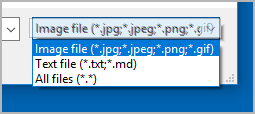novelibre Pagina principale > Pagine italiane > Aiuto in linea > Libro properties
Libro properties
The Libro properties view opens in the right pane when you select
“Libro” in the tree, or when you click on the  toolbar icon. It is the initial view after opening a novelibre project.
toolbar icon. It is the initial view after opening a novelibre project.
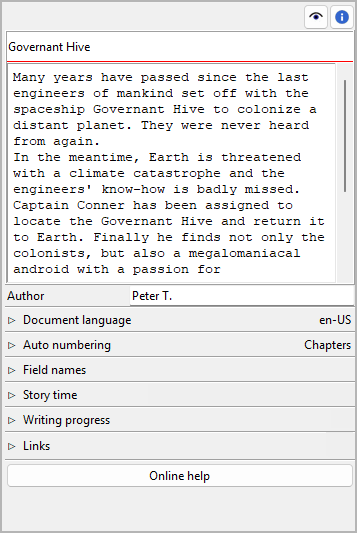
Title, description, and author
Title and description are displayed in an editable “index card”.
The editing of book title and author can be completed by pressing the
Enter key. Changes to the description are applied when the mouse is
clicked anywhere outside the text input field.
After exporting the book to an ODT document, title and description appear in the document properties.
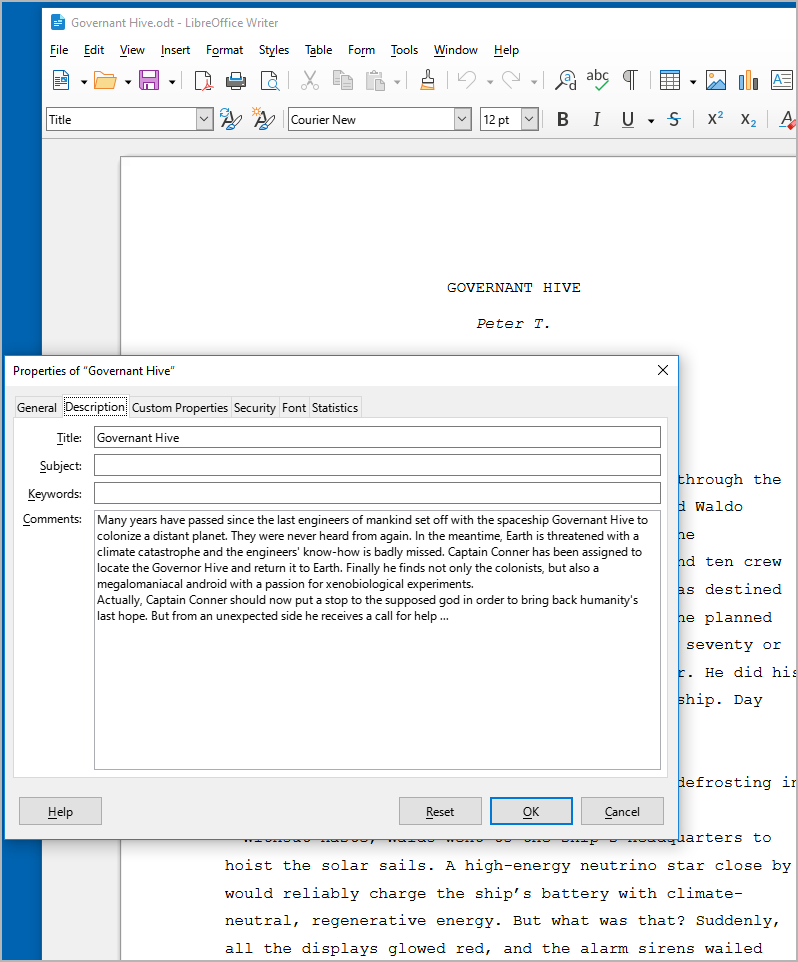
These properties are visible, for example, when the mouse pointer is over the document in the Windows Explorer.
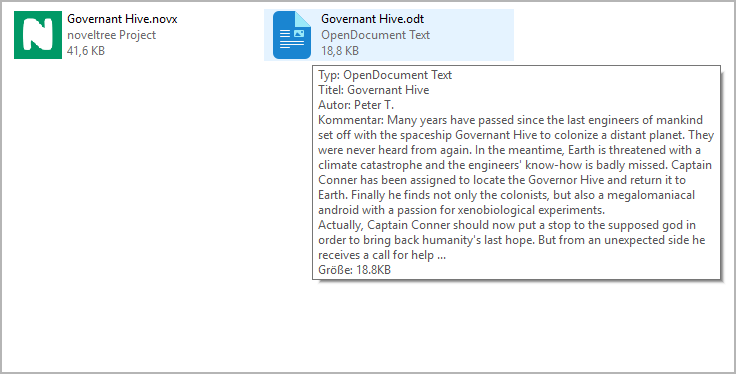
Lingua del documento
Expand or collapse this frame by clicking on the label.

- Language code acc. to ISO 639-1
- Country code acc. to ISO 3166-2
This information controls the spelling checker for export documents.
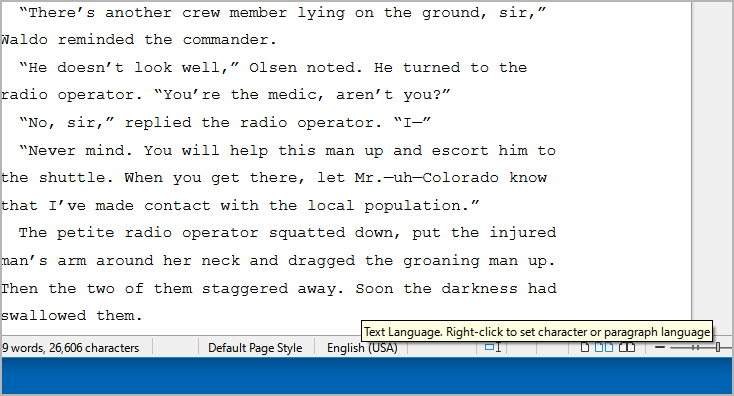
If not set, the System locale setting will be used as default.
Hint
You can also set or change the document language with Writer, then it will be applied on import.
Numerazione automatica
Expand or collapse this frame by clicking on the label.
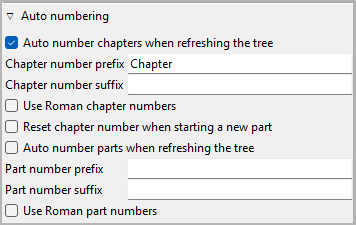
Numera automaticamente i capitoli, Numera automaticamente le parti
If this checkbox is ticked, all chapters/parts are automatically
numbered each time the tree is refreshed. The chapter titles are
replaced with a prefix-number-suffix pattern (without the dashes).
Hint
You can optionally exclude individual chapters/parts from auto-numbering in the Chapter/part properties.
Prefix and suffix entries can be completed by pressing the Enter key.
Note
Make sure to add a space character to separate the prefix or suffix from the chapter or part number.
Usa numeri di capitolo romani
By default, arabic numbers, like “1”, “2”, “3” … are used for auto-numbering. If this checkbox is ticked, Roman numbers, like “I”, “II”, “III”, “IV” … are used instead.
Ricomincia numerazione all’inizio della parte
By default, the chapters are numbered consistently across the parts. If this checkbox is ticked, the chapter numbering starts again with “1” in each part.
Nome del campo
Expand or collapse this frame by clicking on the label.
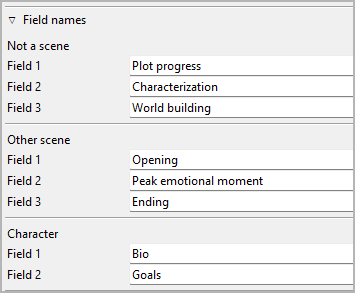
novelibre provides some ready-made fields for sections and characters
to store information that should be at hand when writing. You can name
these fields to fit into your individual story planning concept. Editing
the categories can be completed by pressing the Enter key.
Non è una scena
When you set the Scene frame to Non è una scena, you see the three text boxes whose names you enter here. These categories then apply to all sections that don’t represent scenes.
Altra scena
When you set the Scene frame to Altro, you see the three text boxes whose names you enter here. These categories then apply to all sections that represent scenes other than “Action” and “Reaction”.
Personaggio
Here you enter the names of the two character fields, you can open in the character properties view.
Hint
You can reset a field name to its default value by clearing the input field and pressing the Enter key.
Tempo narrativo
Expand or collapse this frame by clicking on the label.

To get an overview of the course of the story time, you can enter date/time information for each section. The date can be specific (YYYY-MM-DD) or unspecific (number of days, e.g. from the beginning of the story).
Data di riferimento
The reference date is optional. It can be used to convert relative dates into absolute dates, or vice versa. The timeline software plugins may use the reference date for creating events from sections that have no date or an unspecific one.
Format: YYYY-MM-DD, according to ISO 8601.
Hint
Even if you don’t need specific dates for your story, specifying a reference date might be helpful. Thus, a day of the week can be displayed along with the unspecific date, and ages can be calculated for related characters.
Converto le date in giorni
This transforms specific section dates into days, related to the reference date.
Converto i giorni in date
This transforms unspecific section dates into specific ones, using the reference date.
Note
For large novels, the conversion may take some time, depending on your system. During the conversion time, the clicked button will display “Attendere prego…“.
Hint
The commands above convert all dated sections at once. If you want to do the conversion for single sections, just go to the Section properties.
Avanzamento della scrittura
Expand or collapse this frame by clicking on the label.
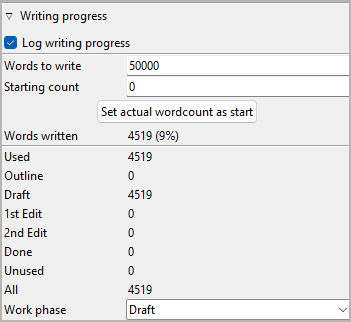
With novelibre, you can set a word count target and track your writing progress.
Note
Regardless of the entries made here, you can see the word count in the status bar at any time.
Registrare i progressi di scrittura
By default, novelibre stores a log entry with the word counts for each day on which you edit the project. You can prevent this by unticking the Registrare i progressi di scrittura checkbox.
Hint
For viewing the daily progress log, you may want to install the nv_progress plugin.
Parole da scrivere
Here you can enter a number (without decimal points or separators)
indicating your writing goal in words. The entry can be completed by
pressing the Enter key.
Inizia conteggio
Here you can enter a number (without decimal points or separators)
indicating the word count you want to start from. The entry can be
completed by pressing the Enter key.
Imposta l’attuale conteggio parole come inizio
Click this button to enter your current word count in the Inizia conteggio field.
Parole scritte
Here the difference between your actual word count and the starting count is displayed. The percentage refers to the words to write.
Fase di lavorazione
This setting is for the tree viewer “Fase di lavorazione” coloring mode.
- Sections with the same completion status as the selected work phase are black.
- Sections that are ahead of the selected work phase are green.
- Sections that are behind the selected work phase are magenta.
Collegamenti
Expand or collapse this frame by clicking on the label.

This is a list for image and research document links.
Although novelibre holds some character/location/item data, it is not the right application for extensive world building. For this, you may want to use more powerful software, like Zim Desktop Wiki. In this case, novelibre allows you to create links to the text files that will take you quickly to the right places in the wiki.
Or you have collected some images that could inspire you when writing. Then simply create links to these images to open them with your system’s standard image viewer.
Tip
If you have collected several images for a character in a folder that your standard image viewer can browse through, a single link to any image file is sufficient.
The links are displayed in a list in the order they are entered.
Aggiungi Link
When clicking on  , a file selection dialog
opens. The selected file will be added to the link list.
, a file selection dialog
opens. The selected file will be added to the link list.
Hint
By default, the dialog shows image files. For other file types, change the selector in the lower right corner.
Rimuovi Link
When clicking on  or pressing the
or pressing the Canc
key, the selected link is removed from the list.
Aprire Link
When double-clicking on a link, or clicking on
 , the link is opened with the standard
application for the link’s file type.
, the link is opened with the standard
application for the link’s file type.
Hint
If you want to open certain linked files with another application than the standard application, you can provide a novelibre “launcher” setting. For this, just create a text file named launchers.ini in the
.novx/configdirectory (where all configuration files are stored). Here you can assign applications to the file extensions.Zim Desktop wiki pages are a special case. For this, the Zim program is assigned to the .zim extension.
This example shows a setting that makes novelibre open text files with the Zim Desktop Wiki application instead of the standard text editor:
[SETTINGS] .zim = C:/Program Files (x86)/Zim Desktop Wiki/zim.exe
Cover thumbnail
A cover thumbnail is displayed with the book properties if you provide a PNG image file with the project name along with the .novx file. The recommended image width is 100 to 200 pixels.
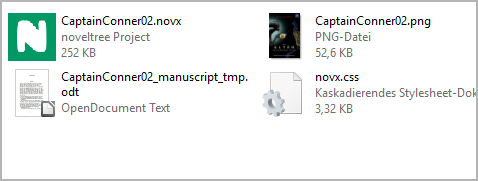

Copyright (c) 2025 by Peter Triesberger. All rights reserved.

